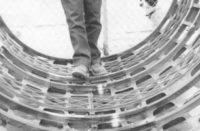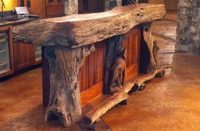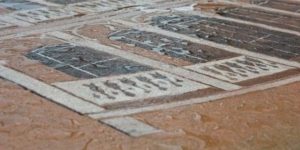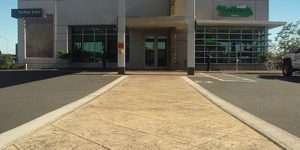Every craftsman likes to consider himself an artist, but Steven Ochs fits the bill more than most. A professor of art at Southern Arkansas University, Ochs also owns Public Art Walks and is considered a leading purveyor of concrete public art in the form of murals.
Ochs started using water-based stains for his projects more than a decade ago. For him, working with concrete is similar to working on thick, absorbent paper, and the stains remind him of a medium familiar to many artists.

“It’s so much like acrylics or watercolors,” he says. “The first time I used it, I thought this feels very familiar; it’s like it wasn’t a new material to me. I just added water, stirred it up and thought, ‘I know how to use this.’”
Ochs explains that he began working in concrete when he started helping a friend doing residential work.
“We kind of upped it to meaningful imagery for the residents,” he says. “The goal was to communicate who these people are and how they want their guests to feel. It started out as decorative concrete and then it became public art.”
Ochs says there are several reasons he prefers working with water-based stains, starting with the simple fact that what you see is what you get.
“Other than drying a few shades darker, you get exactly what you see,” he says. “It’s not like an acid where you’re relying on a chemical reaction and hoping it’s light enough or dark enough. With acid you also don’t know when it’s going to work.”
He stresses the importance of good cleaning and profiling of the concrete before he applies any water-based stain, but says once that’s done, even if there are mistakes, it can be very forgiving.
“You can mix it very thin and use it like a wash,” Ochs says. “You can build it up, you can overlap it, or you can use it in almost a concentrate form for an opaque result. You can create the look you’re going for.”
Just about any technique that works with acrylic paint will work with water-based stains, including using an air brush, or doing wet-on-wet or wet-on-dry applications, Ochs adds. And, while it’s typical to work from light to dark, by going dark to light, it’s possible to create illusions of depth.
As a general rule, Ochs says if he’s doing a residential job he tries to use stains directly from the bottle. The reason: if something heavy is dragged across the stained surface, the repair is easy. For his public art pieces, “Everything is custom mixed.”
The final touch, of course, is a good sealant.
“I use a solvent-based acrylic in a couple of thin layers so it’s breathable and protected,” Ochs says. “Then, I’ll put down two or three layers of a water-based mop-on sealer — something with 35 or 40 percent solids — because everything you do with a water-based stain is pure aesthetics. The end result is all about the sealer and maintaining that sealer.”

















